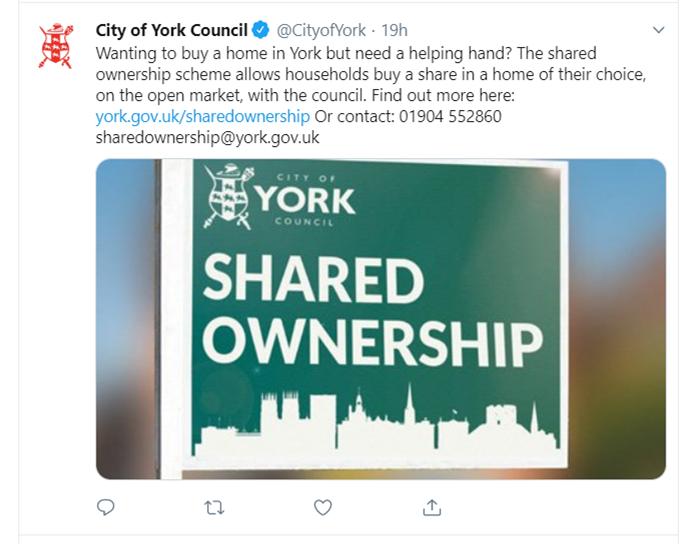Statistics for the last available quarter (Jan – Mar) reveal that the number of house building starts in York fell.
Those attending a recent housing scrutiny committee, will have witnessed a mundane exchange about obstacles to increasing the amount of social housing in the City. Most comment centred on the lack of skilled labour in the sector, with a joint plan with York College the only idea cited to address the issue. Historically, of course, such skills have been imported from other parts of the country, and indeed Europe, to meet peaks in the house building programme.
Other questions remain unanswered.
While the Council policy of purchasing empty homes on the open market – to add to the Council housing pool – has been a limited success, other “innovations” have stalled.

There are around 200 people on the “self-build” register in the City. Plots were allocated for their use at the new Lowfields development. It turns out that the Council has made no progress in finding buyers for the plots. This is another worrying factor on this controversial development where neighbouring residents have given a high priority to having the site development completed quickly. Self build is one of the slowest ways of providing a house, so hopes that the builders would leave Lowfields within 3 years are fading.
Nearby the future of the Yorspace communal living experiment remains in doubt. The Councils decision to sell a plot to them at a discount is likely to face a further challenge if and when contracts are exchanged.
These are both relatively small initiatives, though, compared to the Council’s decision to go big on shared ownership programmes.
Shared ownership allows people to buy a share of between 25% and 75% of a home from a landlord, usually the council or a housing association, and rent the remaining share at a reduced rent. Of the 600 affordable housing units the Council expects to build over the next few years, almost half will be designated as “shared ownership”.
Support for shared ownership came mainly from former Conservative Councillors at the authority (mostly not re-elected in May). Ironically they argued that the scheme would avoid the pitfall of “right to buy” applications which could impact on the rental availability of any new Council houses built, almost as soon as they were completed.
But the early signs are that there is only a very limited market for shared ownership tenure in York. Few of the 1700 or so who are on the housing waiting list seem to see this as a solution to their problems. (Many are older people seeking to “downsize”)
The Council offers to help individuals (with incomes of less than £80,000 a year) to buy homes on the open market and then allocate them to shared ownership. It has not published any figures which show how many have taken up this offer.
The Council also has some new build and conversion properties which it markets itself as shared ownership. It says on its web site that it does not have any such properties available at present. Nevertheless, it continues to advertise properties on Cemetery Road.
Again, no performance stats have been published by the Council. Councillors need to question how the shared ownership programme is impacting on the housing waiting list.
They may also wish to question further whether the Council is right to set up its own development and sales arm.
Local estate agents are better qualified to find buyers and renters.
